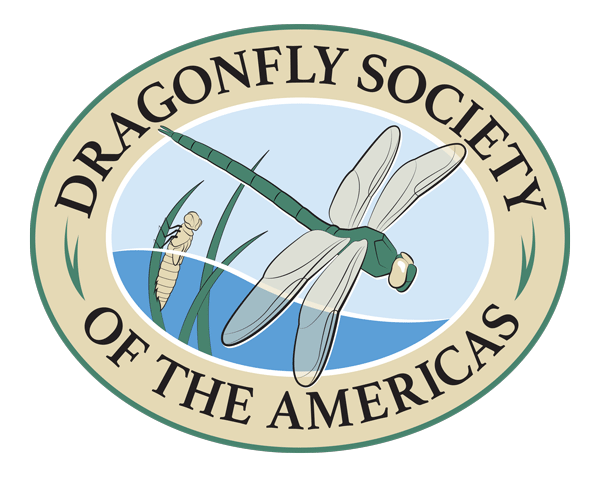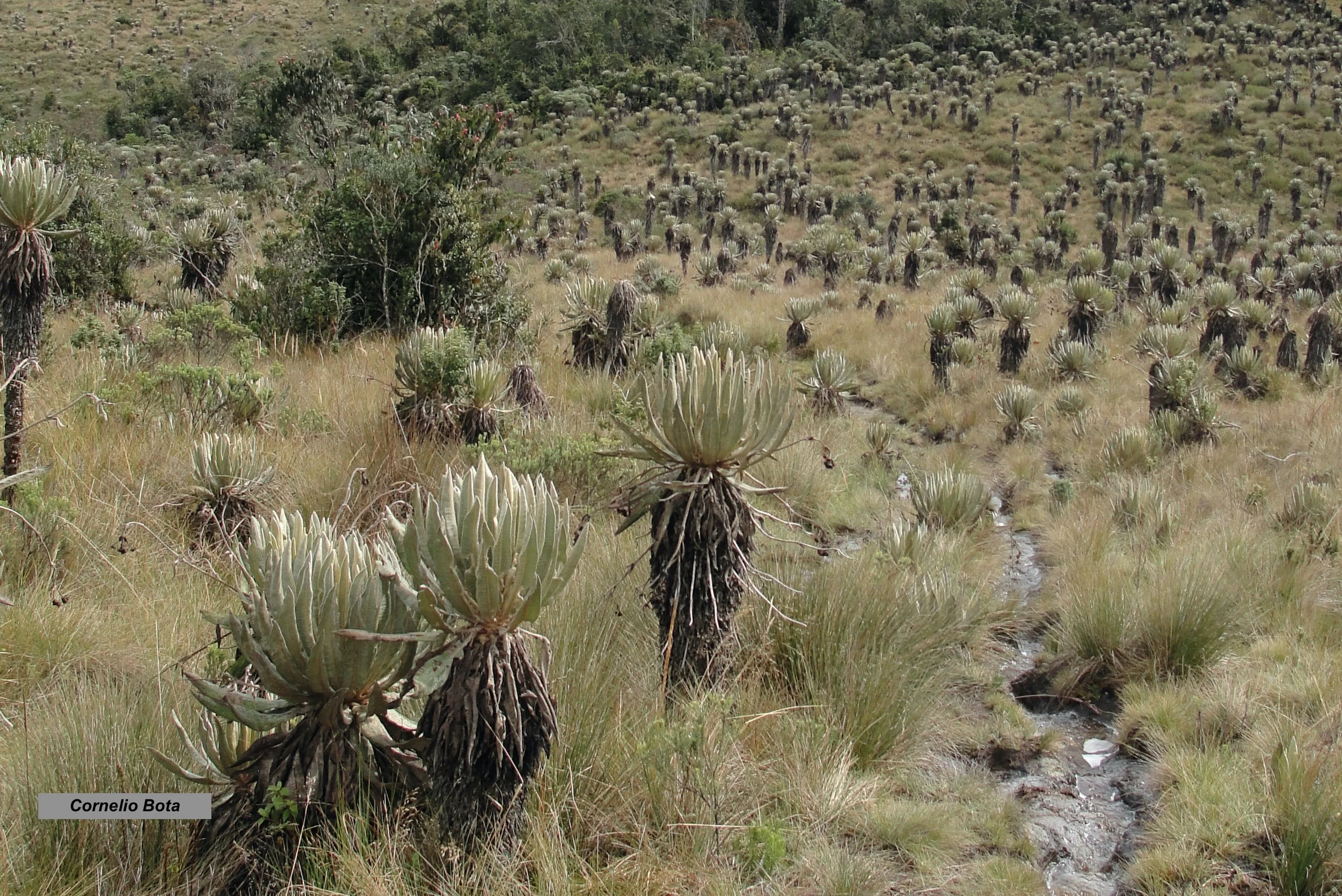July Species of the Month: “Happiness of the Mountains” damselfly (Mesamphiagrion gaudiimontanum)
Mesamphiagrion gaudiimontanum (male), El Páramo de Belmira, Central Andes, Antioquia, Colombia (copyright Cornelio A. Bota Sierra)
Our DSA Species of the Month is Mesamphiagrion gaudiimontanum, the “Happiness of the Mountains” damselfly. It is a member of the family Coenagrionidae, and is three centimeters (about 1.2 inches) long. It inhabits peat bogs in the Páramo ecosystems located above 3,000 meters (about two miles) in the Colombian Central Andes. Follow the adventures of Cornelio A. Bota Sierra as he discovers a new damselfly species high in the Colombian mountains.
The Happiness of the Mountains
It was April 2008, but I can remember it as if it was yesterday. I was recovering from knee surgery which took me out of the field—and any walk—for six months. Six months I used to work in the curation of the small Odonata collection stored at the Universidad de Antioquia in Colombia, where I was studying my bachelor’s in biology. Six months which made me realize the value of walking.
The border between the Páramo and the Oak forest on a cloudy day at the Belmira Páramo, Antioquia, Colombia (copyright Cornelio A. Bota Sierra)
I was eager to get back to hiking in the mountains, breathing the pure humid air around the streams while looking for dragonflies. I planned a five-day expedition with the other enthusiastic guys working in the entomological collection to El Páramo de Belmira, the highest mountain in the Central Andes at my state home Antioquia at 3270 meters (10,728 feet).
Hiking in El Páramo de Belmira, the highest mountain in the northern Central Andes, Antioquia, Colombia. (copyright Cornelio A. Bota Sierra)
We were eight keen explorers armed with entomological nets, jars, and envelopes as well as 65-pound backpacks full of food, camping gear, and clothes. It was a beautiful, fun, and difficult approach from Belmira’s town located at 2,500 meters (8,200 feet) to the camp in the Páramo.
The day was cloudy. Not many insects were observed or collected during the exhausting eight hour walk. We eventually reached a place that looked like a Sci-Fi movie landscape from “The Frailejon’s Kingdom”. After a good bowl of soup and some rum shots, we slept like rocks.
Peat bog habitat, El Páramo de Belmira, Central Andes, Antioquia, Colombia. (copyright Cornelio A. Bota Sierra)
The basecamp was at 3,200 meters (10,500 feet), and it freed us from carrying our big backpacks. We explored this peaceful place that smelled fresh and was full of new sounds and amazing things. Grayish-blue toucans. Hummingbirds. All sorts of flowers and leaves. Fascinating frogs. And—of course—insects, especially beetles and a ton of flies.
One of the interesting inhabitants (Gastroteca sp.) of the Belmira Páramo area, Antioquia, Colombia (copyright Cornelio A. Bota Sierra)
But no dragonflies!
It rained hard from time to time, and it was cloudy and breezy. We retreated to the camp to drink some “carajillos”, a mix of coffee and rum, while someone read aloud to help us keep our minds off the cold.
Every time the rain stopped, we went back to explore, protected with plastic ponchos and rubber boots. I was hoping for some sun, but the clouds seemed never-ending. After three days of searching, I had only seen a few blue-eyed darners, Rhionaeschna, and only caught one. Suddenly, the sun shone through a hole in the clouds. I ran as fast as I could to a beautiful peat bog pond I had been observing. The clouds were moving fast, so I knew I did not have a lot of time. When I arrived at the pond, it was late. The clouds once again covered the mountain. I was so disappointed!
Mesamphiagrion gaudiimontanum (male). El Páramo de Belmira, Central Andes, Antioquia, Colombia. (copyright Cornelio A. Bota Sierra)
Suddenly a damselfly jumped and tried to fly away from the edge of the pond. Luckily, my net was quicker. I had just seen a bluish beam. My heart was beating fast! I clumsily reached into the net. It was the most beautiful damsel I have ever seen!
Mesamphiagrion gaudiimontanum (male), El Páramo de Belmira, Antioquia, Colombia (copyright Cornelio A. Bota Sierra)
It was sky blue and shiny black, with astonishing blue pterostigma. I was a beginner in the odonatologica world, but I knew from that moment that it was very rare and probably a new species. Back home, I was guided by Natalia von Elleriender and Rosser Garrison, who helped me identify it and describe it as a new species. I’m grateful for their help! It is Mesamphiagrion gaudiimontanum, which means “the happiness of the mountains”. I traveled back several times and discovered that they have an ontogenetic color change and that females have two color morphs: adrenochrome and gynochrome. On sunny days its population is so abundant that it is the most conspicuous insect in the Páramo, looking like small bluish flowers that can fly from the tip of one plant to the tip of the neighbor. These damselflies create a joyful scene, and one I will always remember.
Mesamphiagrion gaudiimontanum (Androchrome juvenile female), El Páramo de Belmira, the highest mountain in the Central Andes, Antioquia, Colombia (copyright Cornelio A. BotaSierra)
Cornelio Bota Sierra has been exploring Colombian dragonfly biodiversity since 2007. This led him to document and collect thousands of pieces of data on natural history, ecology, and specimens for museums across the country which were the base for some publications as field guides or papers describing new species, rediscovering others and reporting several rare species and new records for Colombia and their conservation assessments according to IUCN. In the past years, thanks to the funding of the Mexican government, he did research for his Masters and PhD studies on the physiological thermal tolerance of a Colombian Tropical Andean community, which is a key factor in understanding how climate change will affect these insects. He currently holds a Post Doc position at the Natural History Museum at the University of Alabama, where he joined the GEODE team to create a complete global distribution dataset and explore ecological and geographical patterns for Odonata.









